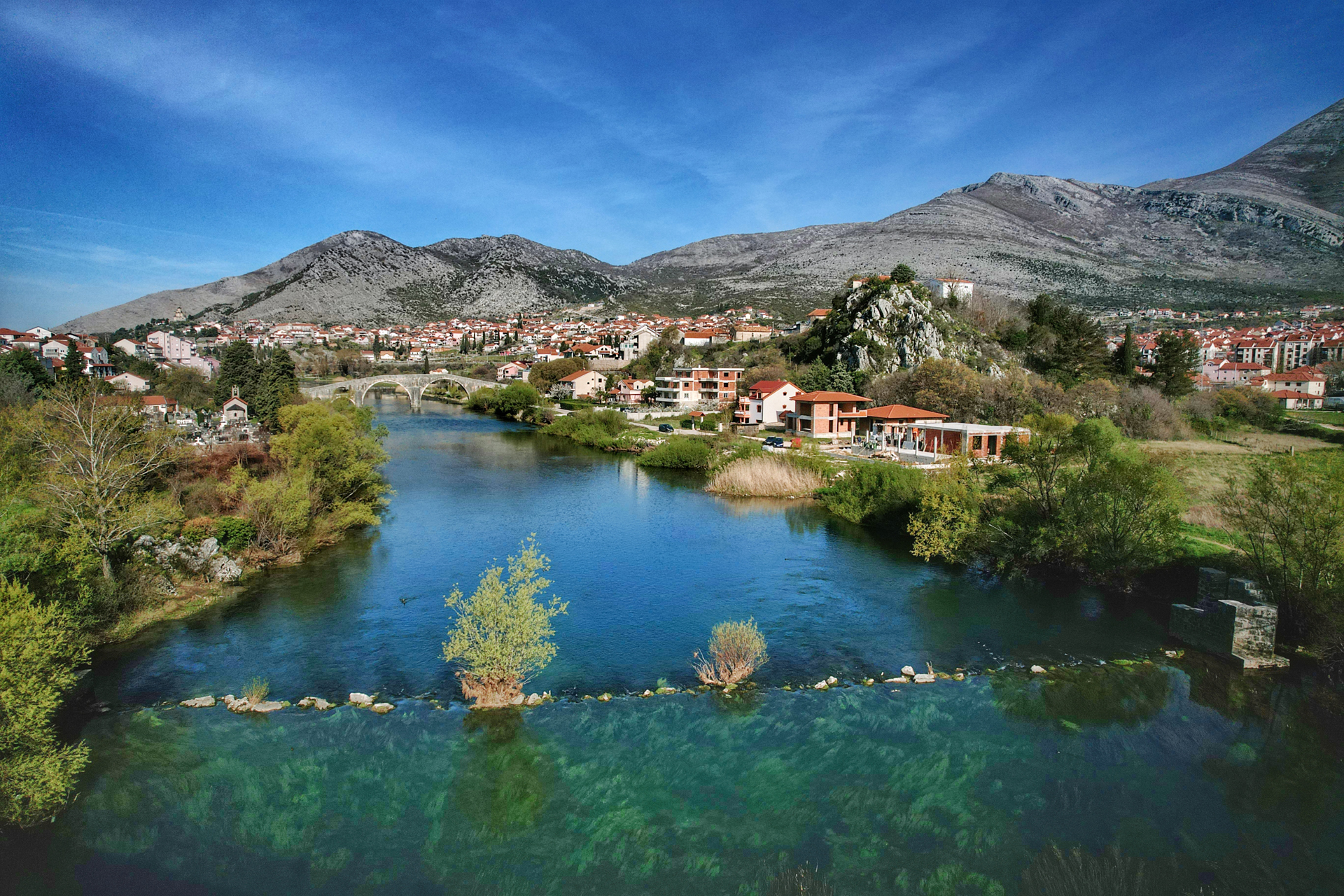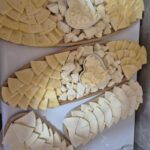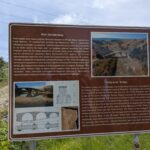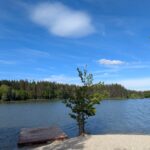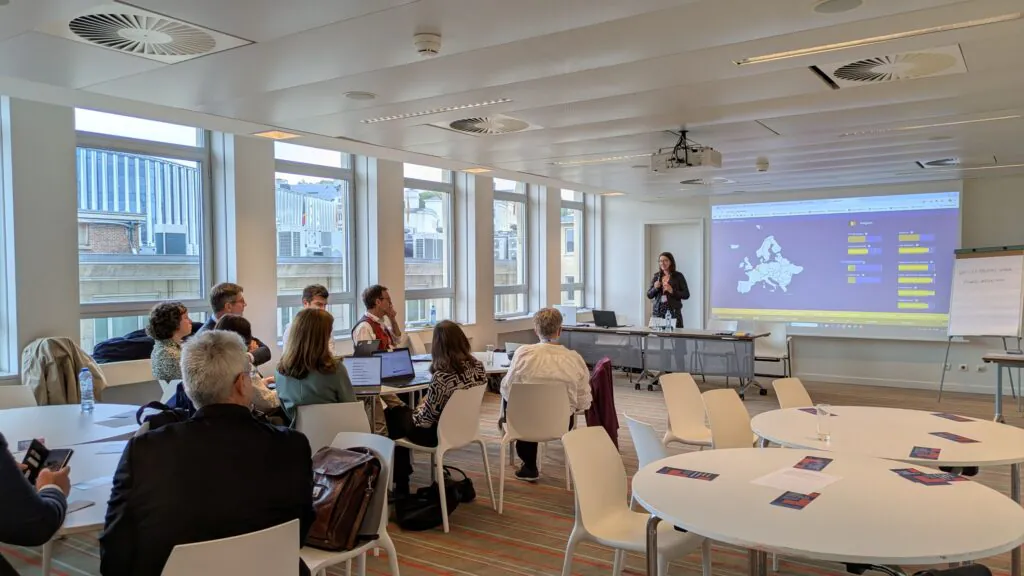Historical and cultural heritage: monuments, cuisine, and festivals
‘I will cherish the memories of this trip forever’
Nataša, University of Ljubljana
After two intense days of discussions, workshops and presentations at our consortium meeting in Trebinje (BiH), we spent the last day exploring our pilot area of East Herzegovina. We were guided by our guest partners, Slow Food Trebinje Hercegovina and the National Tourism Organisation of the Republic of Srpska.
‘Our journey took us to the small but soul-soothing municipalities of Bileća, Gacko, and Nevesinje in East Herzegovina—where the only thing loud is the silence.’
Ana, Tourist Organisation of the Republic of Srpska
Here is what we discovered.
First stop: Bileća
The bus was waiting for us outside our hotel at 8:00. After a 30-minute drive, we arrived in Bileća, a town a town on the very south of Herzegovina, where continental and mediterranean climates meet.
To kick-start our day, we stopped at a local cheese farm. The owners were incredibly welcoming and offered us some delicious local produce to sample. The most exciting experience was tasting the famous Herzegovinian cheese in a suck, which ripens in a whole smoked sheepskin and takes its shape. The production of this cheese dates back to the 14th century.
Before we could try everything, we moved on to visit the famous Stećaks necropolis, which is home to some unique medieval tombstones. These were assembled in 1967, when the tombs were moved to prevent them from being submerged by the future Bileća lake. We strolled around the lake and took some group photos.
- Cheese in a suck
- Stećaks necropolis
- Herzegovinian cheese
- Bileća lake
‘It is interesting to see how regulatory flexibility in this region enables small farmers to earn a decent living without having to intensify production. This benefits the farmers, animal health, soil, biodiversity, consumers and the local economy. In the EU, we should consider tailoring rules to enable healthy, agroecological, small-scale farming to flourish once more’
Carla, European Association for Innovation in Local Development
Becoming local: Gacko and Nevesinje
After leaving Bileća, we moved on to Gacko, famous for its stone arch dam, the oldest of its kind in Europe. When we arrived, the traditional Dani košute fairwas taking place. The fair takes its name from the košuta flower, which is endemic to the area. This event features an exhibition and sales of authentic products from the Gacko region, such as traditional food and beverages, forgotten crafts, folk art, homemade products, handicrafts, souvenirs, and more.
What made it even more special was that we were able to watch an exhibition of young people performing the traditional Kolo dance and singing in the traditional diphthong style (ganga), as well as playing the traditional instrument, the gusle.
What a great way to immerse ourselves in the local culture!
Immediately afterwards, we moved on to another lake: Lake Klinje. We took the opportunity to go on another short walk and cross Dam Klinje, the oldest dam in the Balkans, built in 1896.
Next on the agenda was Nevesinje, where we saw some well-preserved Roman ruins, including a longest stretch of road leading to the medieval Ovčiji Brod bridge in the village of Bratač. This fine example of ancient stonework is named after the site’s traditional use as a sheep crossing. Bratač itself is considered one of the most beautiful villages in the country. It is famous for its traditional products, such as the cheese in a suck and Nevesinje potato.
- Traditional musician
- Dam Klinje
- Ovčiji Brod bridge
A small detour for a UNESCO site!
We stopped for a quick lunch on lake Alavogac before heading to Mostar, home of the famous Old Bridge, a UNESCO World Heritage Site.
Although it is not strictly part of our pilot area, it is a must-see for all visitors to the region.
Mostar developed as an Ottoman frontier town in the 15th and 16th centuries. The town has long prided itself on its famous Old Bridge, Stari Most, after which it is named. However, most of the historic town, including the Old Bridge, was destroyed in the 1990s war.
Reconstruction was made possible by an international scientific committee established by UNESCO. The reconstruction of the Old Bridge area, with its blend of pre-Ottoman, eastern Ottoman, Mediterranean and western European architectural features, is a prime example of multicultural urban planning and symbolises reconciliation, international cooperation, and the harmonious coexistence of diverse cultural, ethnic, and religious communities.
Back on the bus, the feeling was unanimous: after everything we had seen, heard, touched and tasted, the hope is that rural tourism will really flourish in the SMART ERA pilot of East Herzegovina.
- lake Alavogac
- © Silvan Rehfeld
Cover photo: Ana Ćurić

